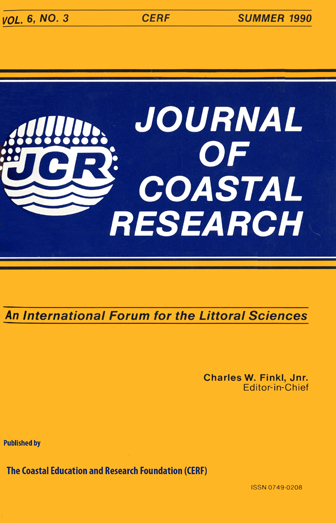A Laboratory Study of Sand Bar Evolution
Keywords:
Wave flume, Bragg reflection, sediment transport, vortex, ripples, wave envelopeAbstract
A series of experiments was carried out in the central test section of a 10 m long wave flume, to study the development and stability of sand bars. Bar formation was initiated b (monochromatic) waves which were generated by a wave-maker at one end of the flume, and partially reflected by a beach at the other end. Sediment grains accumulated into bars with spacings equal to half the local surface wavelength. The positions of the bars relative to the nodes and antinodes of the wave envelope depended upon the type of sediment used. As the bars grew in size the reflection coefficient measured on their up-wave side increased significantly, suggesting a coupling between bar growth and the resonant (Bragg) reflection of the incident waves. In some experiments, stable equilibrium bar profiles were obtained. However, in others, the wave field became unstable, with wave breaking over the bar crests causing a flattening of the bed. Two modes of sediment transport were identified: movement of fine grains in suspension by the residual mass transport circulation associated with a partially standing wave field, and movement of both coarse and fine grains by vortex formation and shedding above small-scale ripples on the bed. When the net transport was such that coarser grains accumulated at the bar crests, this had a stabilising effect on the bars.


